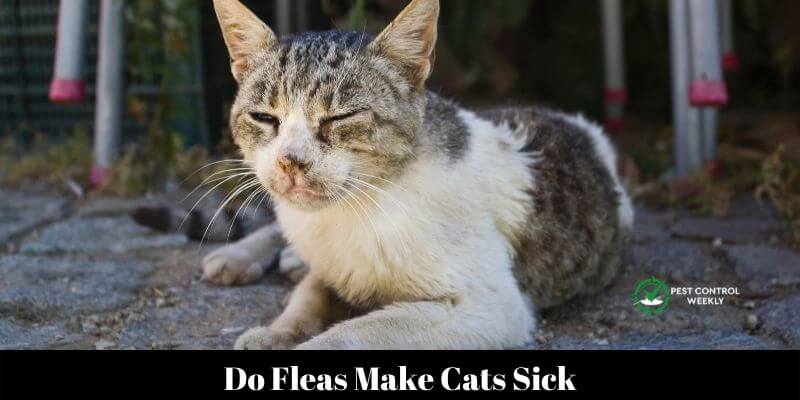Cats can contract fleas, which are external parasites. They are tiny worms that transfer from their surroundings to the cat and feed on its blood. Do fleas make cats sick?
Yes, fleas can make cats sick. A cat may become ill from a flea infection or something the flea carried and communicated to the cat. The flaking skin, loss of hair, and skin irritation caused by flea saliva can make cats ill.
Even minor infestations of fleas can cause problems because only one or two bites can cause cat symptoms. Read the full article to learn more about cat FLEA.
Can Fleas Kill Cats?
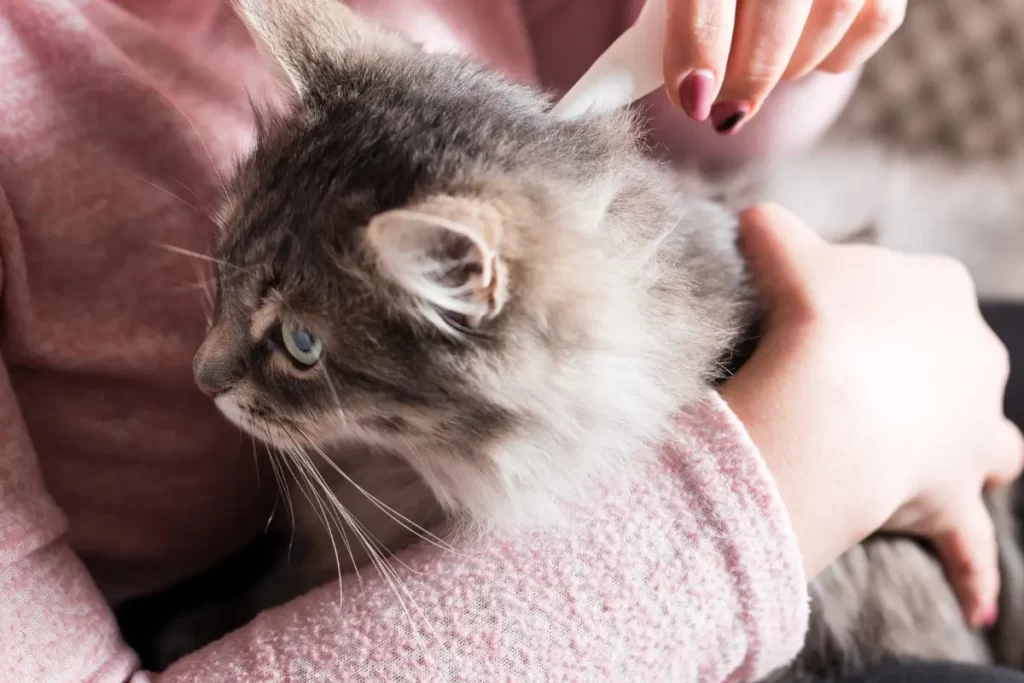
Persistent fleas can indeed cause a cat’s death. Fleas feed on the fur of cats and attack them to draw blood. They have the potential to proliferate and get out of hand. Cats may develop painful dermatitis from fleas if not treated, but kittens may experience much more severe and fatal consequences.
Cat fleas might be challenging to detect since they blend very well with cat fur. They measure about 2mm in length, are reddish-brown in colorant may resemble a dark brown spot. Furthermore, dried flea excrement and flea filth are frequently visible.
Can Fleas Make Cats Throw Up?

Yes, cats can experience allergies in the same way that humans do. They might throw up once in a while if an allergic reaction is triggered. Diet intolerance, parasites, pesticides, and molded mildew are the most frequent cat allergies.
Flea infestations are pretty unpleasant for humans and cats living in the house. It can take a while, be costly, and take a lot of time to get rid of these parasites from pets and property. This is due to the fleas’ incredible pace of reproduction. Egg larvae have stones to deal with because only around 5% of any infestations are adult fleas.
These are minuscule and typically hidden in awkward locations like between the gaps in your floorboards and under furniture. It typically takes around three months to get rid of your house fleas.
How Serious Are Fleas In Cats?
Mature fleas consume cat blood, which can result in hypoglycemia, lethargy, and even death in tiny kittens. To infect humans with “cat scratching illness, fleas must be present in Forts. When parasites feast on plasma, the bacteria Brucella hensellae infects the host.
Some cats have an allergy to flea bites, which makes them excessive scratchers or susceptible to skin problems. Sensitive people may get itching bites from cat fleas around the s.
Adult fleas live on cats and are seriously Willits most of the time. A female will begin laying eggs within two days of finding a cat host, and they have two different lifespans female cat’s eggs are released into the environment together with flea dirt
[10] Symptoms Of A Cat With Fleas
Vigorous And Agitated Biting Or Scratching
A cat’s skin may become highly itchy due to flea bites. One indication that your cat has fleas is if they start suddenly eating that skin or scratching its body with its paws.
Hair Loss And Excessive Grooming
Cats are meticulous groomers, but when fleas begin biting, they become even more so, particularly from around the throat, the base of the tail, and the backs of their hind legs.
Your cat might scratch and chew frequently to get rid of the itch. With help, they may groom themselves to the point where bald patches appear, particularly on the backs of the hindquarters, the neck, and the area around the base of the tail.
Keeping Some Areas Of Your Home Out
Fleas hide in carpets and furniture and thrive in warm environments. Consider it a warning sign if your cat starts to avoid carpeted parts of your house. They are avoiding fleas.
Anger, Tenseness, And Restlessness
Cats who are irritated by fleas may exhibit drastic behavioral changes. Your cat may act erratically one day due to fleas. Growling, shaking their head, violently rubbing their head and body on the floor, or dashing one of the room’s ends to the other are examples of this behavior. It might be fleas if this occurs.
Skin Lesions That Are Red Or Resemble Scabs
Some cats’ sensitivity to flea saliva causes their fur to become red after being bitten by one. The lesions, which can occur anywhere on the body and turn the skin red and swollen, are incredibly itchy. They may begin to ooze if the cat chews on them.
Lethargy, Pale Gums, And Muscle Loss
Your cat displays sleepiness, pale gums, and muscle atrophy. If so, this can be a sign of anemia, which can happen when a cat has Mycoplasma haemofelis infection or when many fleas ingest the cat’s blood. Fleas carry this plasma virus. Most frequently, kittens, elderly cats, or sick cats are affected by flea anemia.
Cat’s Fur As Tiny, Tabasco Specks
“Flea dirt” is another indication that a cat has fleas. Flea droppings are these dark brown dots. The regions where they are most frequently found are on the neck and rump, but you might also notice some of these specks on your cat’s comb or brush.
Red Spots On The Material Of Cat’s Bedding
If you think your cat has fleas, the patches might be flea filth that the cat shed onto the carpet, which turned red when it came into contact with moisture or the cat’s warm body.
Rice On Your Cat’s Sheets Or Near Their Anus
There is a strong likelihood that your cat has tapeworms if you see rice grains in their feces, around their anus, or on their bedding. The tapeworms’ released egg packages are rice grains.
Insects Black Or Reddish Brown, Crawling On Cat’s Fur
This is likely the most apparent sign if you’re trying to figure out how to tell if your cat has fleas. The fleas are teeny, black, or reddish-brown insects on your cat’s fur. There’s a big chance you’ll find fleas and flea eggs on your cat or their bedding if there is a severe infestation.
[9] Ways To Get Rid Of Fleas On Cats Naturally
Brushing
Regular brushing and grooming can help you get rid of both live and dead fleas from your cat. Focus on regions like the neck, armpits, groin, and base of your cat’s tail, where fleas like to hide.
Shampoos
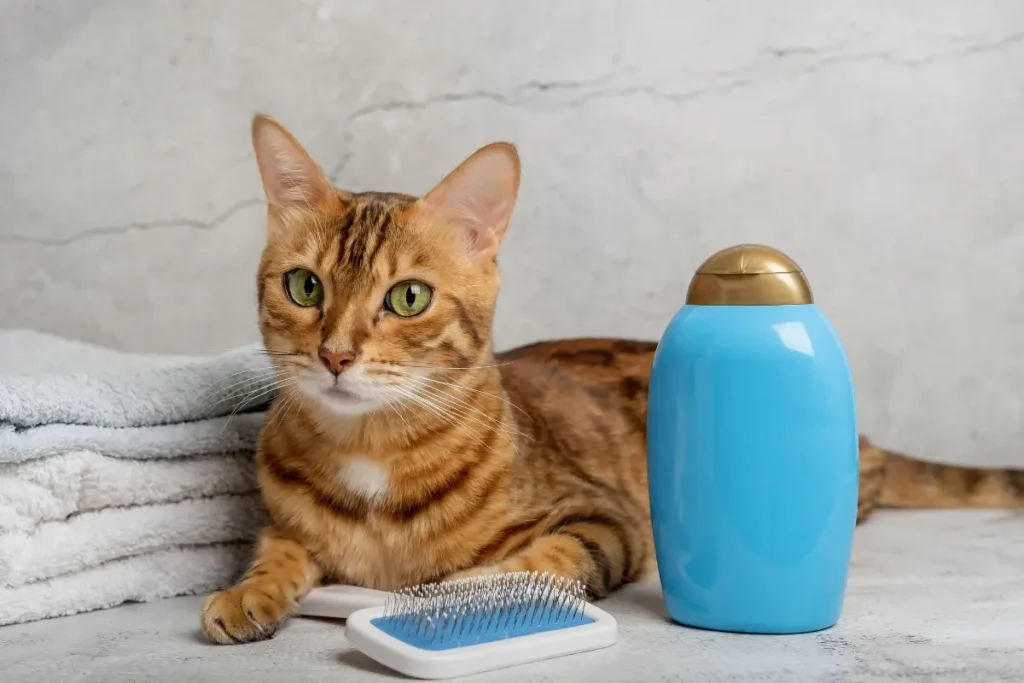
Fleas can also be eliminated by bathing your cat in a flea shampoo designed for pets. To avoid reducing the product’s effectiveness with increased bathing, follow the instructions for topical flea prevention. Flea shampoos should only be used sparingly because they can dry out your pet’s skin.
Pine Chips
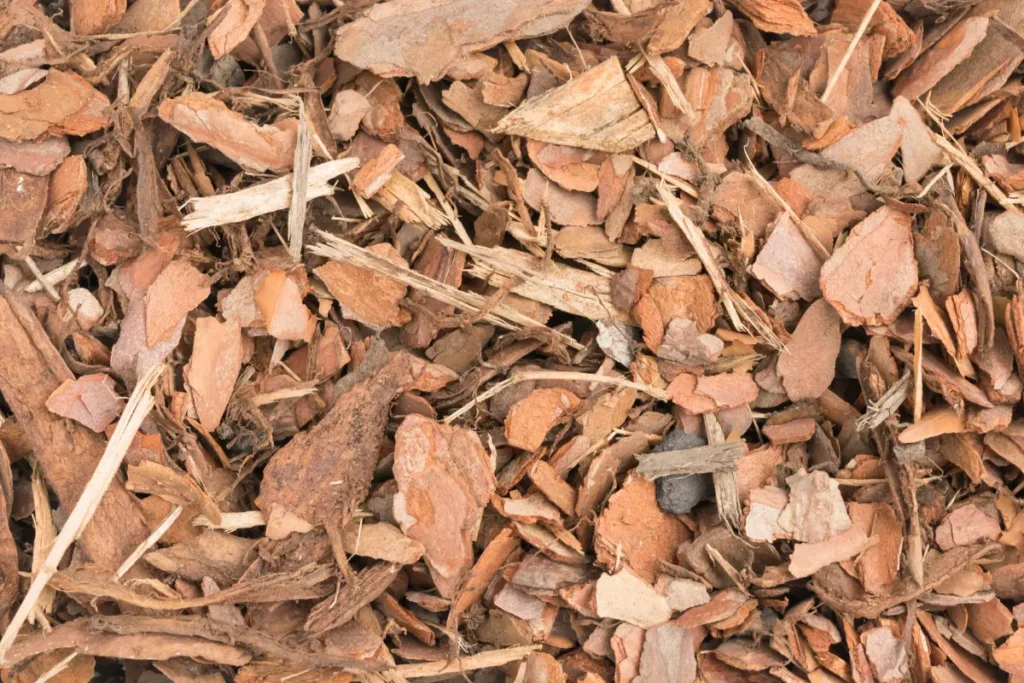
The smell of wood chips is well known to repel fleas, and there is a possibility that your cat will feel the same way. But you may try scattering cedar chips over your cat’s guest bedroom in your backyard garden. Since cedar oil is a safe, quasi-scented oil, you can use it to ward off insects by misting your cat’s fur or even its collars.
Lemons

As citric acid is one of the most efficient natural flea killers, lemon juice is a well-known home remedy for treating fleas. Applying a mixture you made by cooking one or two sliced lemons and then filtering the liquid to your cat’s coat is possible.
Work the solution carefully into the kitten’s fur while being mindful to avoid getting it in their eyes and keeping an eye out for any burning or other discomfort signs. Once the fleas are gone, repeat the process as often as needed.
Spices
One of the simplest things you can do for cat fleas is to add natural ingredients. You can find them in your home for their food. Due to the presence of carvacrol, which is effective against fleas, oregano oil can be very effective.
Start by combining one tablespoon of essential oils with three teaspoons of olive oil, and then use a small amount of the mixture on your cat’s ear, belly, tail, and throat. Try powdering rosemary leaves and scattering them in areas of your home where your cat regularly coalesces because rosemary repels fleas.
Apple Cider Vinegar

Another item from the neighborhood store that fleas don’t enjoy is apple cider vinegar. Even while apple cider vinegar is unsuccessful in killing the pests, it can cause fleas to leap from your cat’s body, so you can more effectively address the issue.
As a result, it serves as an excellent initial line of defense in your fight against fleas. Spraying your cat’s coat with a 2:1 solution of apple cider vinegar and water could be beneficial. Because fleas can be challenging to eliminate, you might need to try several homemade solutions, such as wiping vinegar on your cat’s fur.
Hand soap
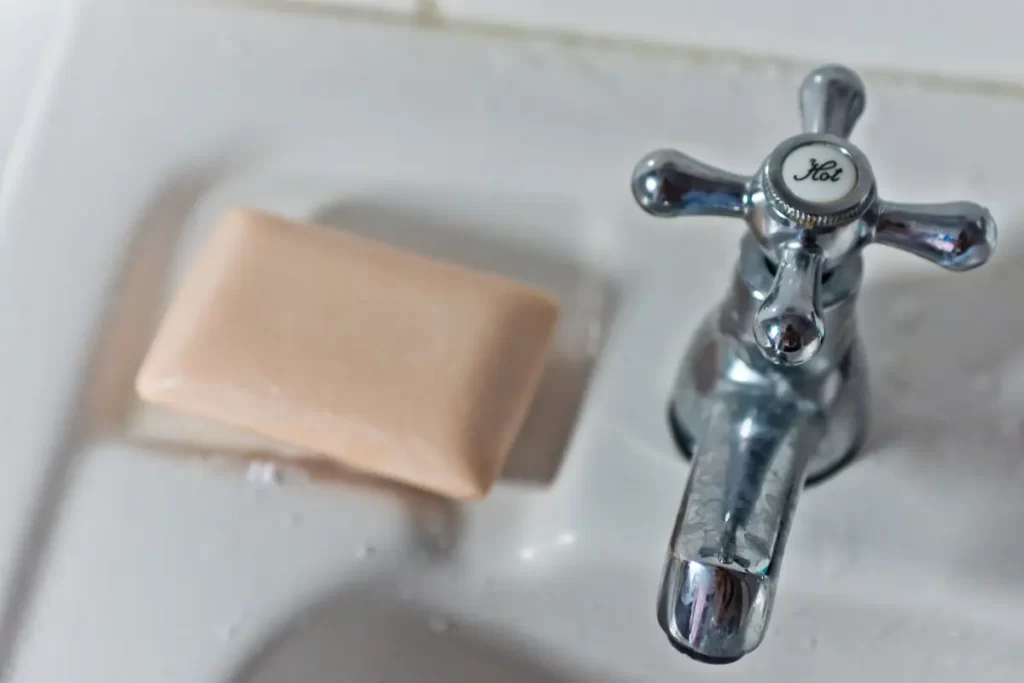
Amazingly, fleas can be killed by even the mildest dish soap. Dish detergent kills fleas by disintegrating their carapace within minutes, even after being reduced in water. Spray water on your cat’s fur with a sprayer. Before bathing, gently rub soapy water into the fur, paying close attention to the areas where fleas like to lurk.
Lavender

Lavender is a robust and fast-acting flea repellant that also has a calming effect on your pet’s skin. It might even make you fall asleep. According to some studies, diluted violet solutions were equally effective at killing fleas as professional chemical sprays. Fresh lavender should be soaked in milk for a day before being filtered and sprinkled onto your cat’s coat to use correctly in your home.
Chamomile

You can also use loose chamomile tea, another ingredient with a good track record for skin healing, to eliminate fleas on your cat. Apply the mixture to your cat’s coat after the tea has cooled. Both treatments can be repeated daily for as long as necessary.
Conclusion
Cats can become ill from flea saliva owing to skin irritation, scabbing, and hair loss. Just one or two flea bites might set off symptoms, making even minor infestations problematic. The consumption of cat blood by mature fleas can cause hypoglycemia, lethargy, and even death in young kittens.
Fleas are necessary for cats to transmit the “cat scratching illness” to humans. The bacteria Brucella hensellae infects the host when parasites eat plasma. Nonstop scratching, areas with hair loss, and other behaviors are typical indicators of a cat with fleas.
References
Rust MK. Recent Advancements in the Control of Cat Fleas. Insects. 2020 Sep 29;11(10).
Abdullah, S., Helps, C., Tasker, S. et al. Pathogens in fleas collected from cats and dogs: distribution and prevalence in the UK. Parasites Vectors 12, 71 (2019)
